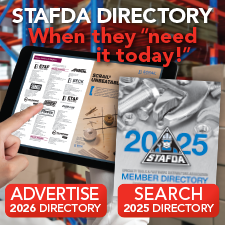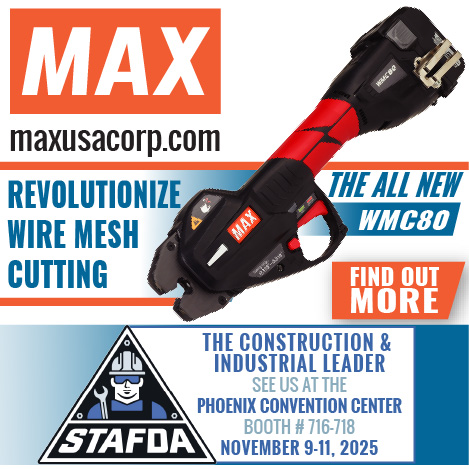Prospecting call tips from a rock star sales trainer
Skip cold calling: focus on developing leads.
Editor's Note: This post, written by Richard F. Glancy of MeltBlown Technologies refers to selling sorbent products, but the skills and techniques are universal and can be applied to any product category.
In our discussions about the topic for this blog post, we talked about cold calling. I'm here to tell you that I've never, ever made a cold call during my entire career in sales and business development. Not only would I not know where to begin, but I don't feel it makes any sense to even go down that road.
So What Does Make Sense?
Personal contact through a phone call is vital in any sales development effort. But that contact needs to come through personal recommendations and qualified leads. Only then can you get on the phone and expect to make some progress toward exploring and building a long-term customer relationship.
Attitude and Personal Conduct
OK, you've got some qualified leads and it's time to get on the phone and see where they might take you. Here's what I recommend simply from an attitude and personal conduct perspective:
- Always make a phone call with a smile. The person on the other end of the phone can always feel your attitude and mindset as those aspects convey themselves directly through the phone, no matter what words you use.
- Show enthusiasm. Just as with your smile, your enthusiasm will come across the phone. Be the person that you'd enjoy talking with on the phone.
- Be polite. You're setting the stage for what could be a long-term relationship. Right from the start it's important to demonstrate what it would be like working together. Polite is the perfect way to get started and, of course, throughout the relationship.
- Talk with a slow and clear voice. Urgent and rushed = crash and burn. First, it's important that your message is understood. Second, it's critical that there's no threat conveyed at any point during your phone call.
- Be completely and totally non-threatening. Set your mind at ease from the start. You are not going to close the sale on the first call. But you can immediately shut everything down by appearing threatening.
- Listen aggressively. This is the key to everything. Your phone call is not about you pitching your products and services. It's all about how you can help your prospective client with their needs and pain points. You can never discover those when your mouth is open. If you're talking, you're not learning. Listen closely and ask pointed follow-up questions that allow the customer to tell you what works and what doesn't from their perspective.
Introduction
Now that you're in the right frame of mind, you need to focus on opening the call. I've found it essential to use a proper introduction.
It's so important to start off on the right foot by stating who you are, why you're calling, and what you expect. For example:
"Hi, my name is Rich Glancy from Meltblown Technologies. John Smith suggested that I call you to see if we can reduce your costs on environmental needs."
You've started the phone call and haven't yet been tossed out on your ear. That's the good news. Now you want to focus on learning more about the prospective client's needs that you can help satisfy.
Questions to Ask
The key here is learning more. What's the current status quo? What are the pain points? How are they currently purchasing their products/services? Here are a few scripted questions to get you started in developing your own.
- What type of spill and spill control sorbents do you use in your facility?
- Where do you use those products?
- What type of volume do you experience in a month, in a year?
- Who is the manufacturer? And, what are the part numbers?
- Are you the person I should speak to about reducing costs on these products?
- What are you currently paying? It will be my benchmark for reducing costs.
Something else I want to point out here is who you are asking. Almost all of your loyal customers are likely already using spill control products, so be sure to ask them some of the above questions to uncover new opportunities.
You can see the progression with each question, diving deeper into what you need to demonstrate cost savings. Plus, you're also making sure you're talking to the right person.
I also recommend that you add a step after each and every question above and throughout your phone call—listen aggressively. Go back to the top of this post and read that section again. It's all about learning more about your potential customer's needs and pain points. You can't possibly do that when you're talking. Listen aggressively.
Once your questions, and listening, are completed, end the call by telling them that you'll cross-reference their requirements to Meltblown Technology products and return a simple spreadsheet to show the savings. Provide them with a timeframe to expect your results. Don't forget to thank them for their time.
Follow Up Is Essential
You've now gathered a great deal of information about your prospective customer's requirements. They've also invested a great deal of time. And, you've made a promise to provide a detailed cost comparison. It is absolutely essential that you prove good to your word. You're establishing your mode of operation and building your reputation, for good or bad.
There's More
There's always more. If we can help build your sales through our broad expertise in manufacturing and applying industrial absorbents, or for help in developing your sales approach, use our contact page or call us at 888-653-7509.
Posted by Richard F. Glancy on Jul 13, 2016 8:30:00 AM. For more infomration about Meltblown Technologies products, visit www.meltblowntechnologies.com.















